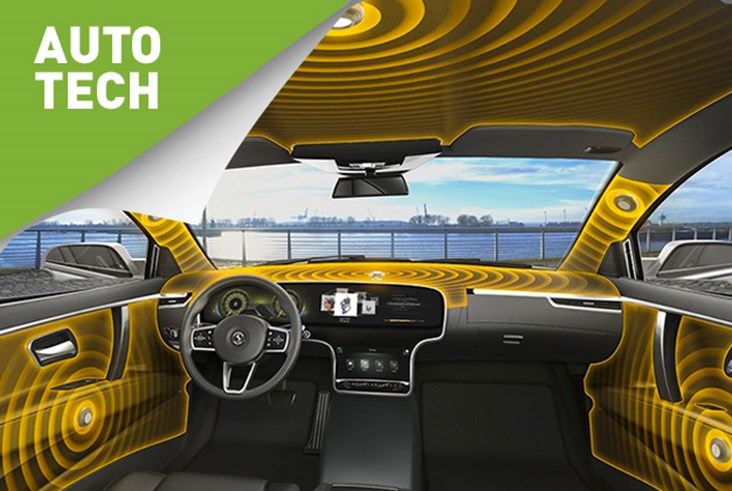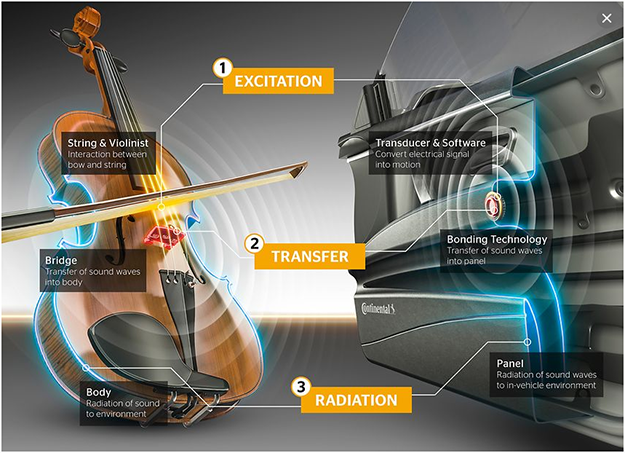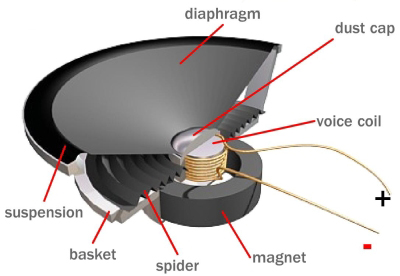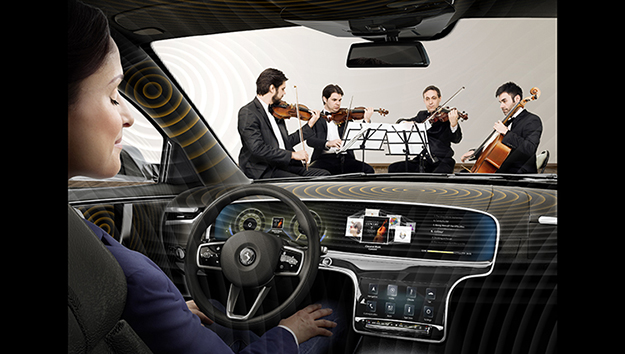
In the age of continuous automotive innovation, car manufacturers are constantly introducing new vehicle technologies and designs. One aspect automakers focus on in particular is vehicle weight, performance and fuel economy.
Premium audio systems have become a common vehicle option in most of today’s cars. Most of the time, selecting such an option also increases the number of speakers in the car. You can find vehicles with 8 speakers as well as up to 20 on the higher end of the vehicle spectrum.
What most car buyers fail to realize is that along with the improved sound and increase in number of speakers, vehicle weight is substantially increased while also decreasing vehicle space. Automakers invest heavily in R&D in order to reduce vehicle weight - introducing new light-weight materials and hardware designs. Their goal is not only to increase performance and fuel economy, but to also minimize required hardware space to make space for other new technologies down the line.
Surprisingly, no automaker has found a solution to this problem until German automotive supplier Continental came along with a brilliant idea. They have recently developed a new audio system which eliminates the use of conventional speakers by using the interior of the car itself to generate sound – they call their technology Ac2ated Sound.
Ac2ated Sound
Continental likens the Ac2ated Sound concept to a string instrument such as a violin. Ac2ated Sound allows automakers to reduce vehicle weight and save space by replacing conventional speakers with actuators.
Rather than using a combination of tweeters, midrange speakers and subwoofers to deliver sound, Ac2ated Sound relies on a set of compact actuators placed throughout the car. These actuators create sound by vibrating or “exciting” certain interior surfaces to resonate like an ordinary speaker would.

The actuators themselves are nothing special. They are made of nothing more than a magnet and coil that vibrate, but unlike ordinary speakers, the movement is transmitted through vehicle surfaces rather than an oscillating membrane.
According to Continental, the different vehicle interiors of the cabin serve different frequencies. The A-pillar is responsible for the higher frequencies, door linings are suitable for creating medium frequencies and bigger areas such as the roof lining play the role of the subwoofer.
Continental claims that their technology is becoming more refined by the day. The engineers are repeatedly testing the technology to find the different parts of the car that resonate certain frequencies better than others.
How It Works
Conventional speakers work rather simply and are made of three main components. First, the stereo sends an electric current through a coil of wire, called the voice coil, which in turn induces a magnetic field. The voice coil sits in front of a magnet, which is connected to a diaphragm.

As the stereo sends alternating currents through the voice coil, the coil is attracted and repelled from the magnet, dragging the diaphragm along with it as it moves back and forth. This motion of the diaphragm is what basically creates sound.
Ac2ated Sound follows the same setup, function and design but simply replaces the voice coil with traducers and diaphragms with the cars’ interior trim panels. The job of transducers is similar to that of the voice coil - turning electrical signals into motion. The transducers are what send vibrations the interior vehicle panels, which create pressure waves that vibrate our eardrums.

Here’s a video showing how the technology works exactly:
Advantages
The main purpose of introducing such a concept is weight savings - this is where its real benefit comes to light. Continental claims that their system is 90% lighter than any speaker system installed in vehicles today. This is a quite desirable quality given that automakers are increasingly attempting to squeeze every ounce of fuel economy out of their cars.
In comparison to a conventional high-end vehicle audio system, Continental’s speaker-less solution dramatically reduces volume by a factor of ten or higher. This decrease in volume is an asset to automakers, providing more room for future technology and enhancements.
Another advantage is the design of the technology itself. Given that the actuators can emit sound through any interior body panel, “speakers” can be placed in far more locations than the few centralized spots we’ve come to know. This gives the driver and passengers a true 3D listening experience. Given that Ac2ated Sound actuators vibrate entire body panels, not many are needed throughout the car. On the other hand, conventional audio systems may easily require between ten and 20 speakers to achieve 3D sound.
The system also brings an aesthetic feature to it. Since actuators are tucked away behind body panels, interior designs will be more seamless. With today’s mix of tweeters, midrange speakers and subwoofers in addition to the increase in number of speakers, interior vehicle design seems interrupted with numerous bland grill speaker fronts.
Conclusion
Ac2ated Sound technology pleases both automakers and car-buyers with its simplistic design and superior sound quality and experience. Automakers are thrilled on the notion of drastic weight-savings but what they also stand to gain is drastic cost-savings as well.
Ac2ated Sound technology is significantly cheaper for automakers to implement since it requires fewer parts to manufacture and less time and materials on interior designs making it a win-win for everyone.
Continental has stated that their speaker-less audio system is ready to go into production, and will get its official reveal this fall at the Frankfurt auto show.
Latest Business
Intelligence Report














